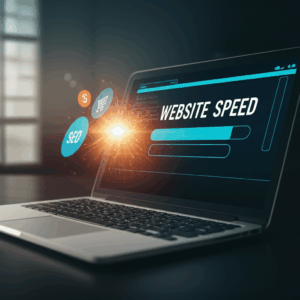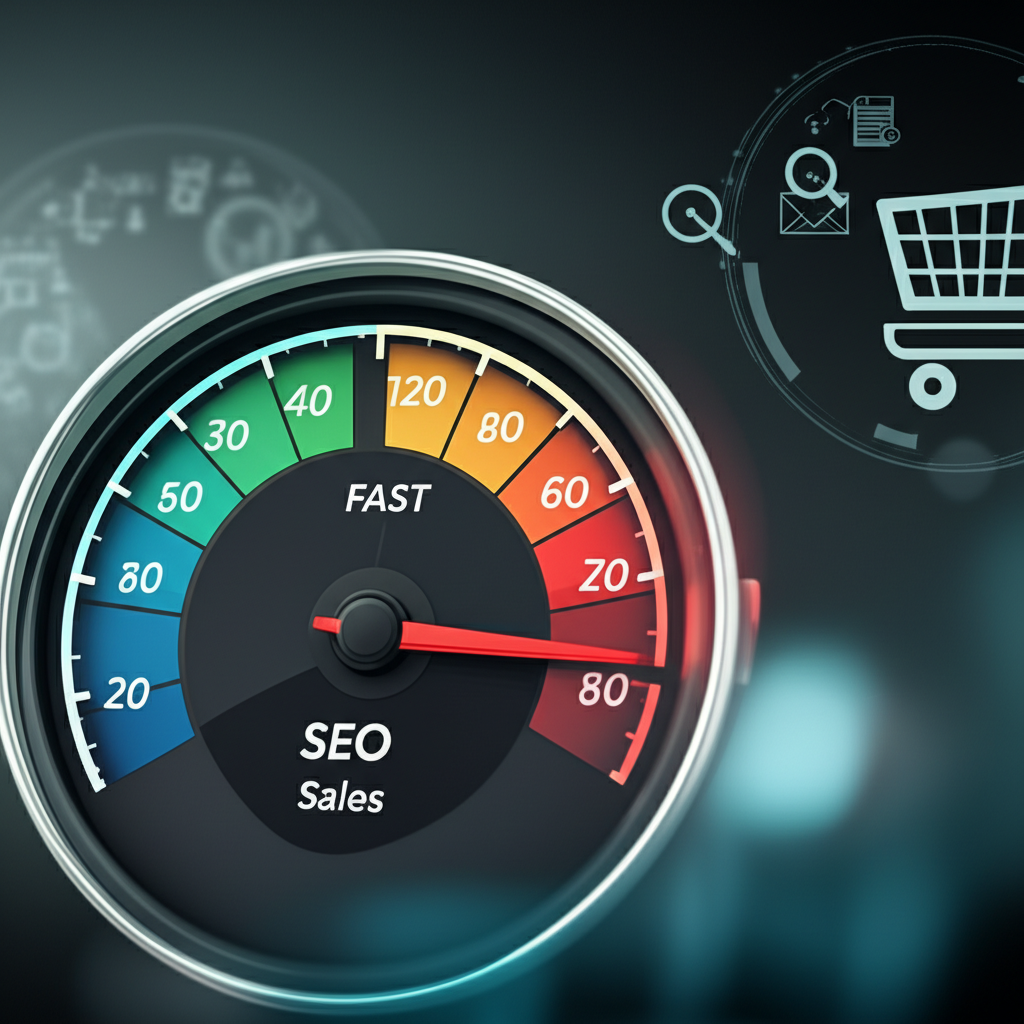- Why Website Speed Matters for SEO
- Impact of Website Speed on Core Web Vitals
- Website Speed: A Critical Factor for Sales
- The Mobile Speed Imperative
- Optimizing Your Website Speed: Practical Strategies
- Website Speed: An Investment, Not an Expense
Website Speed: Crucial for SEO & Sales
Website speed plays a pivotal role in both your search engine optimization (SEO) and ultimately, your sales conversions. In today’s fast-paced digital landscape, users expect a seamless and instantaneous online experience. A slow-loading website can lead to higher bounce rates, lower conversion rates, and a negative impact on your search engine rankings. This article will delve into why website speed is so crucial, how it affects SEO, and practical strategies you can implement to optimize your website for speed and boost your bottom line.
Why Website Speed Matters for SEO

Google has explicitly stated that page speed is a ranking factor. A faster website contributes to a better user experience, and Google prioritizes websites that provide a positive experience for its users. When a website loads quickly, users are more likely to stay engaged, explore more pages, and complete desired actions, such as making a purchase or filling out a contact form. This positive user behavior signals to Google that your website is valuable and relevant, boosting your search engine rankings.
Impact of Website Speed on Core Web Vitals
Website speed is also directly linked to Core Web Vitals, a set of metrics that Google uses to assess the overall user experience of a website. These metrics include Largest Contentful Paint (LCP), First Input Delay (FID), and Cumulative Layout Shift (CLS). LCP measures how long it takes for the largest content element on a page to become visible, FID measures the time it takes for a page to become interactive, and CLS measures the visual stability of a page. A slow website will negatively impact these metrics, resulting in lower rankings.
Website Speed: A Critical Factor for Sales
Beyond SEO, website speed has a direct impact on your sales and revenue. Research has shown a strong correlation between page load time and conversion rates. Even a one-second delay in page load time can significantly reduce conversions. When users encounter a slow website, they become frustrated and are more likely to abandon their shopping carts or leave without completing the desired action. This translates to lost sales and decreased revenue.
The Mobile Speed Imperative
In today’s mobile-first world, optimizing website speed for mobile devices is paramount. A significant portion of online traffic comes from mobile devices, and users on mobile networks are even more sensitive to slow loading times. A slow mobile website can lead to even higher bounce rates and a significant loss of potential customers.
Optimizing Your Website Speed: Practical Strategies
Fortunately, there are several actionable strategies you can implement to optimize your website speed and improve both your SEO and sales performance.
Optimize Images: Large image files are a common culprit of slow loading times. Optimize your images by compressing them without sacrificing quality. Use formats like WebP, which offer superior compression and quality compared to traditional formats like JPEG and PNG.
Leverage Browser Caching: Browser caching allows users’ browsers to store static assets like images, CSS files, and JavaScript files locally. This reduces the amount of data that needs to be downloaded on subsequent visits, significantly speeding up load times.
Minimize HTTP Requests: Each element on your website, such as images, scripts, and stylesheets, requires a separate HTTP request. Minimize the number of HTTP requests by combining files, using CSS sprites, and inline small CSS or JavaScript code.
Choose a Fast Hosting Provider: Your web hosting provider plays a crucial role in your website’s speed. Opt for a reputable provider with fast servers and a reliable infrastructure. Consider Content Delivery Networks (CDNs) to distribute your content across multiple servers geographically closer to your users.
Minify CSS and JavaScript: Minifying your CSS and JavaScript files removes unnecessary characters, whitespace, and comments, reducing file sizes and improving download speeds.
Enable Gzip Compression: Gzip compression reduces the size of your website’s files before they are sent to the user’s browser, significantly improving load times.
* Implement Lazy Loading: Lazy loading defers the loading of images and other non-critical content until they are needed. This improves initial page load time and reduces the amount of data consumed, especially on long pages with numerous images.
Website Speed: An Investment, Not an Expense
Investing in website speed is an investment in your online success. By optimizing your website for speed, you not only improve your SEO rankings and drive more organic traffic but also enhance the user experience, boost conversion rates, and ultimately, increase your sales and revenue. In the competitive digital landscape, website speed is no longer a luxury but a necessity for businesses looking to thrive.











Leave a Reply